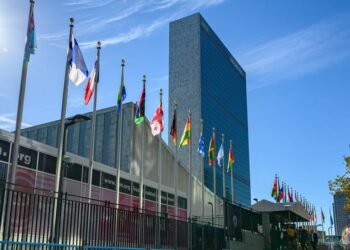This year has seen traces of resource nationalism or risks thereof playing out extensively in many top mining countries, and traces of resource nationalism will remain elevated in 2022, according to market analyst, Fitch Solutions.
These sentiments agree with those of Verisk Maplecroft in their political risk outlook for 2021, highlighting the rise of the practice of resource nationalism by resource-rich countries in the year.
Resource nationalism assumes several forms, including renegotiation of existing mining contracts to get better terms currently witnessed in the DRC and Mongolia. Also, it can take the form of increase in taxes or royalties on the mining sector as is witnessed in Chile, Peru, Russia.
For some countries, it manifests in asset nationalization or forced equity transfers. Meanwhile, for others, the threats from governments like in Zambia, Mexico, Zimbabwe, in-country beneficiation as witnessed in Indonesia, or export restrictions indicate traits of the practice.
Although rising rapidly in SSA and countries in Latin America over the past year, it is spreading across the world and is now noticeable in SSA- the DRC, Mali, Zimbabwe, South Africa, Guinea; Latin America- Mexico, Peru, Chile; North America- the US; Europe- Russia and Asia- Indonesia, Mongolia, Fitch indicated.
In its latest industry report, Fitch affirmed that “a number of factors will incentivise governments to consider asserting control in the mining sector and tightening mining fiscal regulations”, Fitch noted.
COVID-19 pandemic remain the most driver of Resource Nationalism
Fundamentally, a lot of these factors have been clearly highlighted in recent quarters, and the covid-19 pandemic has been flagged as the most contributing factor to this trend.
The upward trend in mineral and metal prices in 2020/2021 has renewed interests in the mining and metals sector and accelerated potential tax and royalty returns for governments. Considering the favourable global dynamics for the mining and metals sector, Fitch forecasts prices to remain elevated in 2022.
Furthermore, the improved prospects for the Green Energy Transition minerals such as copper, nickel, lithium, cobalt, among others amidst the ongoing decarbonisation efforts are increasing investments in the sector. Thus, prompting governments to make sure their countries benefit from these trends, Fitch indicated.
Also, increased economic or fiscal hardships and rising social inequality in the wake of the covid-19 pandemic are providing strong incentives for a rise in government intervention in the mining sector.
Fitch also noted that one of the key drivers of resource nationalism is “political risk linked to elections”. For instance, the recent election of social-leaning governments, in the US and Peru is a factor behind potential changes to mining regulations in these countries, Fitch averred.
Sudden changes in governments, which have happened in some countries recently, also usually increase risks of a change in mining regulation. Mali for example, has seen two coups in 2020/2021.
While elections happen on a regular basis, their convergence with economic hardships and social tensions over rising inequalities pose an increased risk of resource nationalism, Fitch asserted.
READ ALSO: GSE closes mildly negative from Trading Activity as Market Cap surges by GHS100 million





















